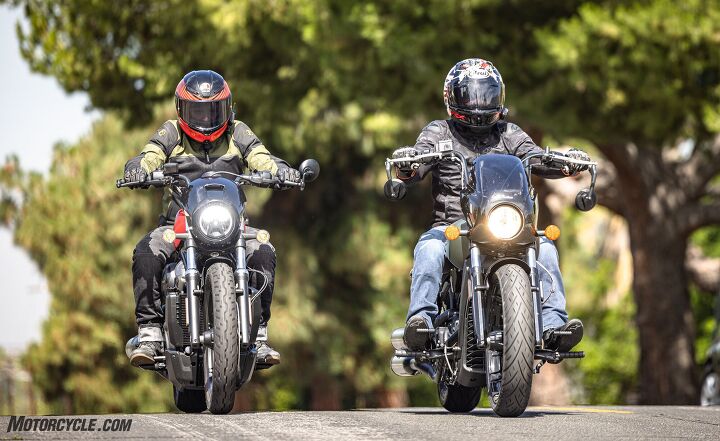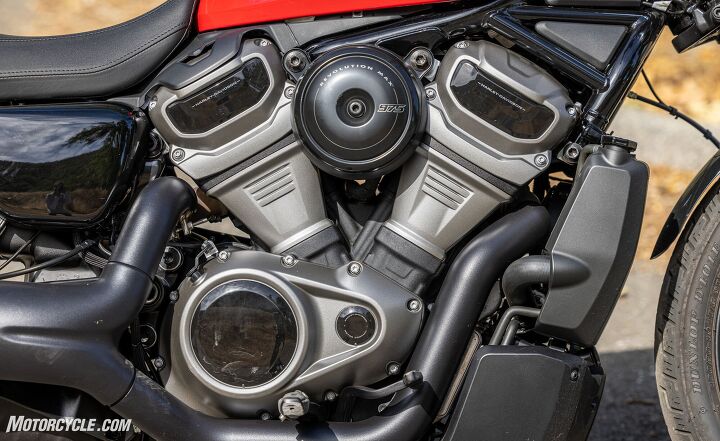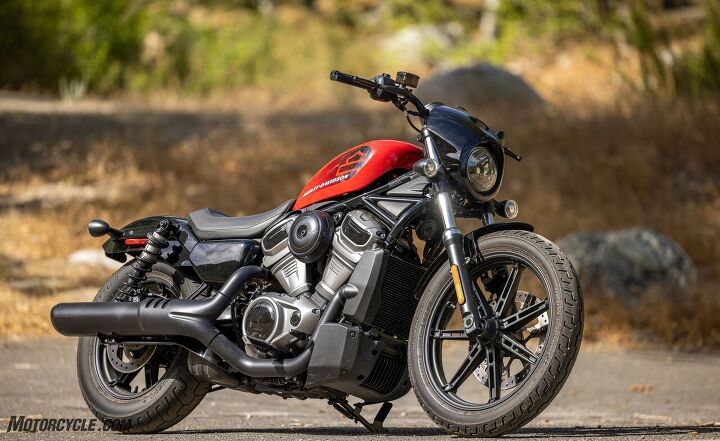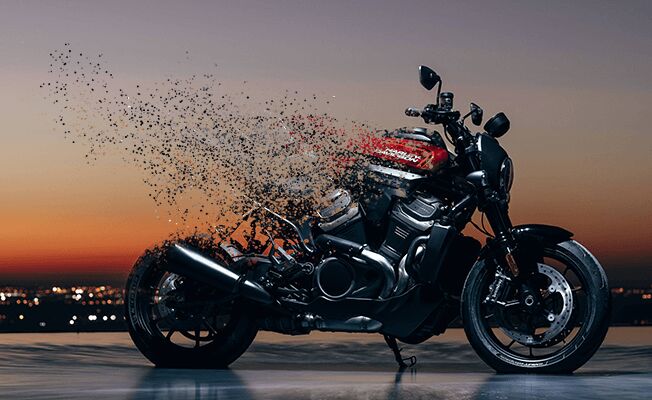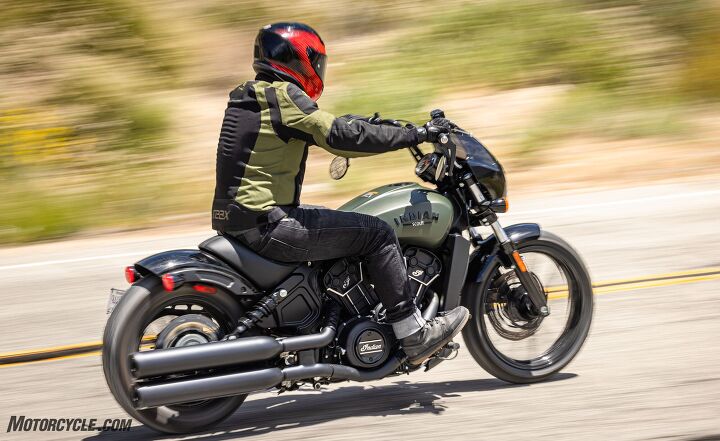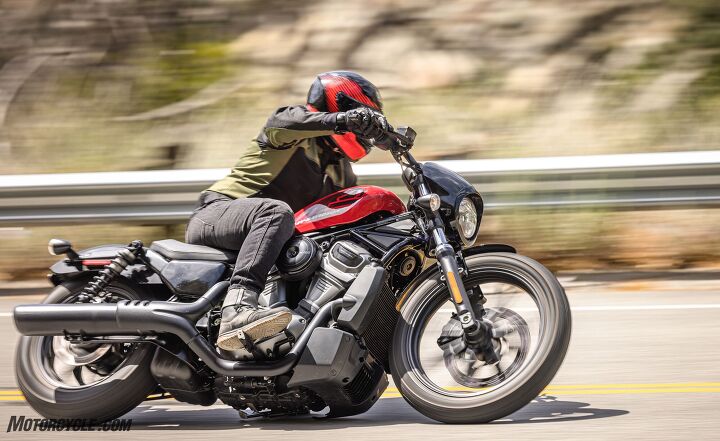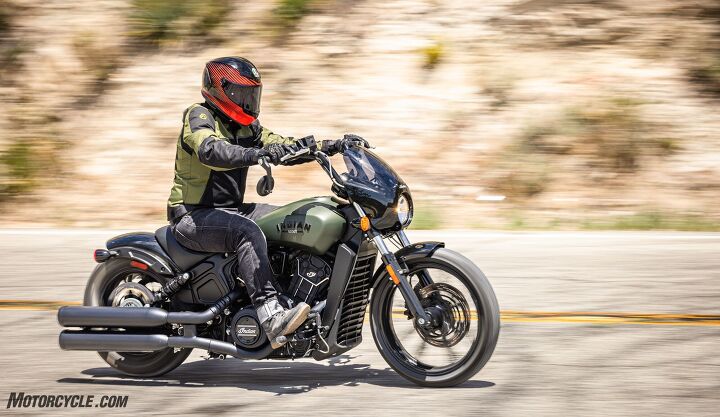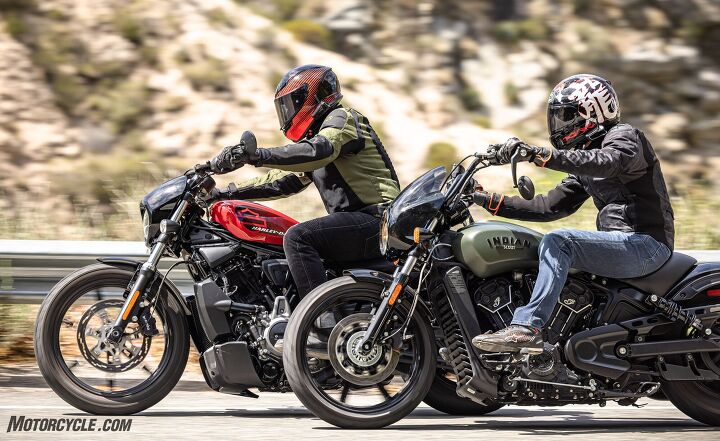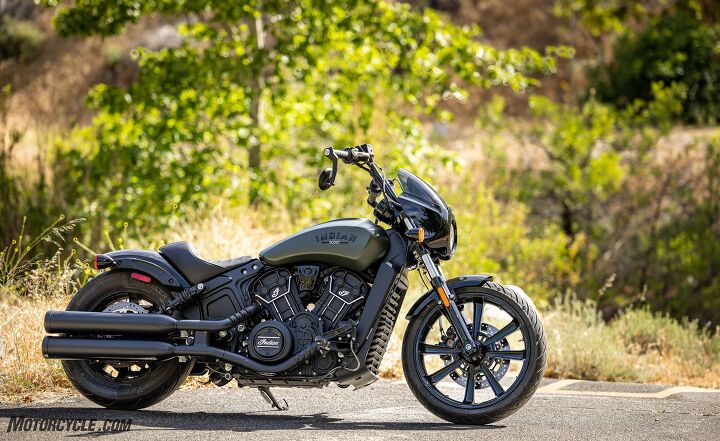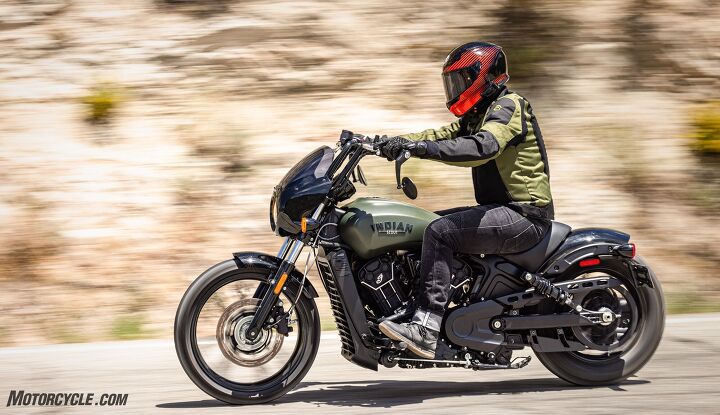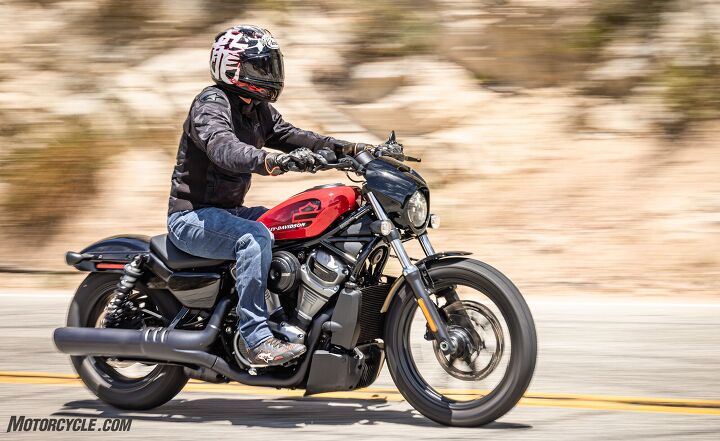Motorsports Racing News & Blog Articles
Showdown: 2022 Harley-Davidson Nightster vs Indian Scout Rogue
The Harley vs Indian rivalry is up there with some of the biggest rivalries in modern pop culture. Think Coke vs Pepsi, Mac vs PC, Army vs Navy, Edison vs Tesla. Then there’s Harley vs Indian. These two titans of motorcycling built a rivalry that lasted for decades, and despite the fact Indian dropped from the scene for 60 years, ever since its resurgence in 2013, it’s as though the rivalry picked right back up where it left off. And we’re all better for it.
American motorcycling is known for big touring bikes, and the recent Showdown between the Harley Road Glide Limited and Indian Pursuit Limited Premium was as Americana as they come. However, cruisers are also a staple of the American riding experience. Chief among them (Indian pun not intended) the Harley Sportster and Indian Scout. These two lightweights of cruiserdom are anything but light but have historically been the bikes to reach for if simplicity and bare-bones cruising were what you were craving. Low and slow, as they say.
2022 Harley-Davidson Nightster vs. 2022 Indian Scout Rogue| 2022 Harley-Davidson Nightster | ||
|---|---|---|
| + Highs Such a lively engine The sportiest Harley we’ve ridden in a long time The brakes and suspension aren’t half bad | – Sighs You’re constantly sliding back in the seat The left side of the bike looks unfinished So, are you a cruiser or a sportbike? | |
| 2022 Indian Scout Rogue | ||
|---|---|---|
| + Highs It looks the business The perfect engine for cruising This is the one if classic cruising is what you’re after | – Sighs Two inches of rear suspension travel is ridiculous The seat locks you in place Wooden front brake | |
Taking this particular rivalry to the 21st century, we fast forward to this, the Harley-Davidson Nightster and the Indian Scout Rogue. Two modern examples of classic American cruisers, built by the very companies that know the genre best.
So, the question is: Which one does it better? Ryan and I set off to find out.
Appearances Can Be Deceiving
Here’s the thing. You look at these two motorcycles, you see the specs, you see the names on the gas tanks (or airbox cover in the Harley’s case), and you naturally assume they’re meant for the same purpose. We did. That makes an evaluation a pretty straightforward affair – or so we thought. Any fan of the Sweet Science (that’s boxing, in case you didn’t know) will tell you that styles make fights. Instead of a straight slugfest, a brawler versus a tactician can produce a fight with unpredictable results. In this case, we found out that we didn’t simply have two cruisers to pit against each other. It was very different than that. The clues were in front of us all along, but we should have known this wouldn’t be so easy.
With the Harley-Davidson Nightster, we’re seeing an offshoot from the Sportster S launched in 2021 – the biggest single revolution of the Sportster family in its history. Instead of the S’s RevMax 1250, this one’s Powered by the Revolution Max 975T. It’s still a V-Twin, but it’s nothing like the Sportster engine of before. Here you’ll find liquid cooling, overhead cams, and even variable valve timing. And that doesn’t even account for the modern Showa suspension and – get this – three inches of rear suspension travel. Huzzah!
With the Nightster, you’ll find something closer in essence to the original Sportster (like the ones from the 1950s) – a bike that allowed you to do a little bit of everything but stayed true to the Sport in its name. This departure from the “classic Harley” that we’re used to would manifest itself throughout our test.
The Indian Scout Rogue, on the other hand, is far from revolutionary. It follows the mold of building upon – but not straying too far from – a single platform to a T – a tactic so many other manufacturers do as well, including Harley. Anyway, the bones of it all start with a Scout, including the rumbling 1133cc liquid-cooled V-Twin. From there, Indian mixes and matches parts from the shelves. Not that that’s a bad thing. In this case, we’re looking at the full blacked-out treatment, 19-inch front wheel, a solo seat, mini ape-hanger bars, drooping mirrors, and a bikini fairing to round out the package.
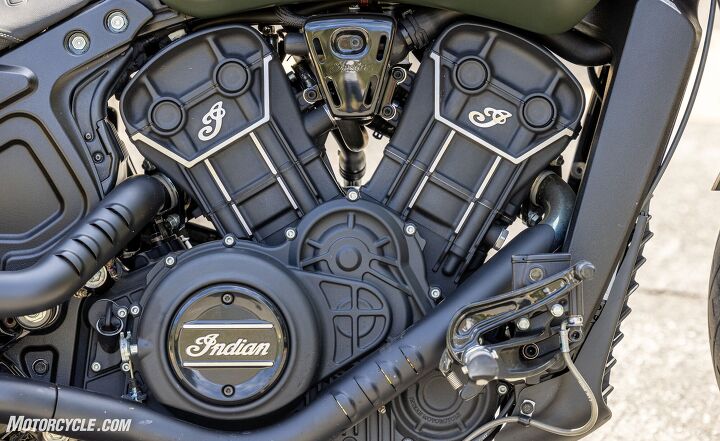
Not to be outdone, the Rogue’s 1133cc V-Twin offers loads of torque off the bottom with that classic V-Twin rumble.
As a styling exercise, both bikes stay true to the images they’re trying to portray. The Nightster is a respectful interpretation of what a modern-day Sportster could be, while the Rogue, quite simply, looks good. It’s sculpted where it should be, flexes its muscle in all the right places, and looks imposing even sitting still. Ryan, being the dapper fellow he is, got multiple compliments from people about the Rogue. The Nightster? Nuthin’.
Ryan says: The Scout Rogue ticks all the boxes for my millennial style preferences. Blacked out components, check. Matte finish, check. I’ve always loved the look of the Scout’s engine too. The Rogue really ties it all together in the looks department for me.
I, for one, like the Nightster’s homage to its past. The overall shape is sporty, athletic, and fun. I even like the retro-inspired peanut tank shape, too. But the closer you get to it, the more you start scratching your head. At least from an aesthetic point of view. The air intake no longer houses the air cleaner, which is fine, but it’s now wearing a round cover, held in place by three rubber press-fit tabs, to look like the round air cleaners yesterday’s Harleys are so well known for.
Fine. We’ll give that one a pass. What’s harder to look at is the entire left side of the motorcycle. For as finished and polished as the right side of the Nightster looks, the left side of the bike reminds me of those times in school when, during a test, time ran out and we turned in what we had. The fit and finish of the right side cylinder, cylinder head, and exhaust draw your eyes away from the plastic covers, but there is no such draw for the eyes on the left side. Instead, the covers grab your attention, as do the various hoses, bolts, and wiring that are left out there for the world to see.
Here’s Ryan’s take on the Nightster’s looks:
I really dig the fact that Harley kept the Nightster true to the silhouette of the previous-gen Iron 883, but the overall styling doesn’t really work for me. When I think of cruisers, I like a little nostalgia. To me, a big V-Twin Harley-Davidson looks right at home next to a hot rod from the 30s, 40s, or 50s – no matter what year the motorcycle is. This new Nightster doesn’t do that for me. It looks more like a plumped-up caricature of what a Sportster used to be.
Okay, But What Are They Like To Ride?
In a word, different. Maybe we’ve been too complacent with what a cruiser, especially one with the words Harley-Davidson on the tank, is defined as. We assume we’ll find a low seat, narrow profile, mid-mount controls, and mini-ape hangers. It’s the classic Sportster profile if you will. But in case you haven’t noticed, The Motor Company is on a mission to reinvent itself. The Nightster is just another example of how. On paper anyway, the Harley delivers on that Sportster profile. Sitting on, and riding, tell a different story.
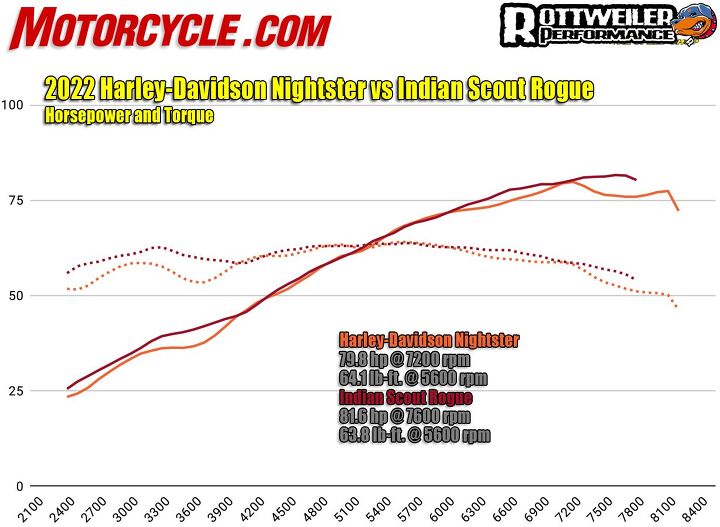
The two dyno charts are similar in so many ways, but the Indian makes significantly more torque at the bottom of the rev range, where it counts the most. The Harley’s graph dips at the bottom and on top, but it sure likes to rev.
We begin, as we usually do, with the engines. If you look at the dyno chart, on paper the two V-Twins are remarkably similar. Both make around 80 horsepower and 64 lb-ft of torque. Even the overall shape of the dyno graphs follow very similar paths.
The difference-maker is something you can’t see on the dyno – engine character. The RevMax engine in the Harley is 158cc smaller than the Indian. With a smaller bore (97mm vs 99mm) and significantly shorter stroke (66mm vs 74mm), the RevMax likes to spin up and really comes alive the higher the revs climb. When was the last time you read that sentence in a Harley review (Pan Am and new Sportster not included)? Look closely and you’ll notice a dip in the Harley’s power at low rpm, but then it pulls along until nearing redline. The engine is a lot of fun, but if you ask us, a bigger version, in a different platform, would be even more fun. Say, 1250cc, and in a streetfighter chassis. Call it a Bronx or something. Maybe it’s just a pipe dream…
Ryan agrees: The new mill in this latest generation of Sportster is an entirely different experience from what you’d expect from a V-Twin-powered cruiser. The motor feels like it would be more at home in a naked bike chassis * hint hint * and lacks the really low-end torque one would expect.
By contrast, the Indian’s 69 cubic inches lopes along like a cruiser should, doling out its torque in quintessential V-Twin ways the moment you twist the grip. It doesn’t come alive at higher revs like the Harley, but it’ll deliver all of its power right up to redline if you really need it to. It’s everything you expect from a muscle cruiser and shifting through the six gears while in the meat of the power is how you put the Rogue in its sweet spot. “It’s fun to ride the torque wave of the Indian’s more cruiser-like mill, but the Rogue doesn’t deliver nearly the sporting experience of the H-D,” Ryan says.
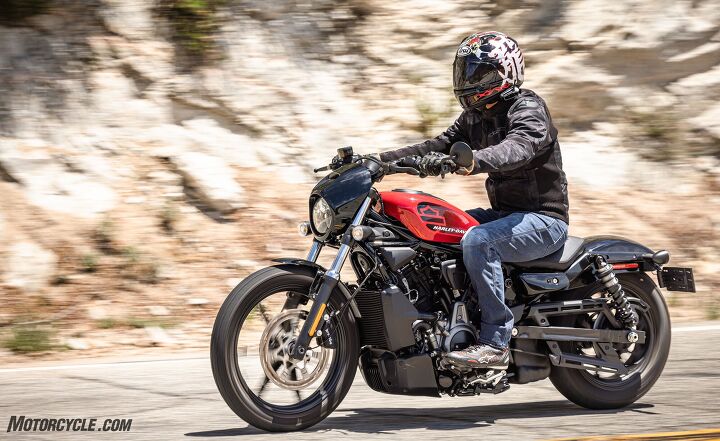
You’ll find yourself pulling yourself up constantly on the Harley. It’s like the seat is sloped backward a little.
If the engines didn’t give away the differing characteristics of each bike, then the riding dynamics drive the point home. Oddly enough, it all starts with the seats. The Harley’s flat profile offers no support when the power of the RevMax engine kicks in and you find yourself scooting back in the seat even though you didn’t mean to. If you didn’t know any better you’d think the Nightster’s saddle is actually tilted backward a few degrees. The remedy is pulling yourself back into place with your arms, prompting Ryan to note, “Like Red Bull, the Nightster will give you wings. Wings, of course, meaning a nice V shape as you work your lats while riding through the constant pull-up riding position.”
If you’re not much of a fitness freak, then the Indian is a nice reminder of what a classic cruiser position is like. Your feet are forward, your hands are reaching (but not too far) for the bars, and the seat locks you into place. On the bright side, you’re not creeping backward unintentionally like you are with the Harley, but the seat also keeps you from going anywhere.
Here’s Ryan: The single-seat, which is specific to the Rogue, doesn’t offer any room for moving around and feels so deeply scalloped that it forces your hips to rotate backward causing a further rounding of the lower back than the forward controls had already forced.
So it’s a lose-lose. Both bikes suffer compromises, but there’s a silver lining. When you get out of cruiser mode and delve into sporty mode, the Nightster’s mission, and ergos, start to make a little more sense. Approach anything remotely twisty and you’re sitting forward anyway and can take advantage of the Harley’s willingness to lean (at least compared to the Indian). As Ryan notes, “The mid controls are appreciated, and during aggressive riding, even the handlebar isn’t an issue as you find yourself leaning in and tucking down toward the front wheel. I didn’t mind it at all while riding aggressively on twisty roads.”
Did you catch that? Ryan just mentioned some iteration of riding aggressively on the Nightster twice up above. It’s true, you can really rail on the Harley – more so than we gave it credit for from the outset. Those bars let you whip the bike from side to side with gusto you may not be used to on a Harley. It’s really a mental shift getting used to it, but it’s a lot of fun, reined in (thankfully) whenever the footpegs touch down to remind you the action is toeing the line between fun and disaster.
With a whopping three inches of rear suspension travel at your disposal, the Nightster feels plush compared to the Indian. When you’re talking about so little travel in the first place, every inch counts (keep it clean, people), and the extra inch compared to the Rogue offers just a little more compliance over bumps or freeway expansion joints. Judged against most other motorcycles and you’ll be looking for a more compliant shock package from the aftermarket.
In the Rogue’s defense, it has no intentions of being a sporty motorcycle – this was supposed to be a cruiser Showdown after all. It will still get around a corner more deftly than most traditional cruisers should. You just need to get used to the pegs sacrificing themselves to the pavement, as they will get chewed up. Get a little overzealous turning right and the exhaust cover will offer some of itself to the blacktop gods, too. When that happens, check-up. Otherwise, you’re asking to lift the whole rear of the bike off the ground.
But again, the Rogue isn’t about carving. It’s about cruising – and it’s really good at that. Ryan hated the fact the seat keeps you locked into a single riding position. It can be annoying at times, but I wasn’t as critical about it. Really, Ryan and I both centered our hatred toward the ridiculous two-inch shock travel. Not that either of us have ridden a hardtail, but it felt as though there was no rear suspension at all. Seemingly every pebble could be felt, and anything bigger than that would send a jolt through our spines. Here’s Ryan:
The Showa components on the Nightster are fairly stiff, but they work like suspension should and feel quite well damped compared to the Rogue. The Indian’s suspension is what you’ve come to expect from the cruiser genre… which isn’t a good thing. It didn’t take long for Troy and me to gravitate toward one bike while blasting through our bumpy test route. There was audible discomfort heard through our Cardos from whoever was on the Indian during our ride.
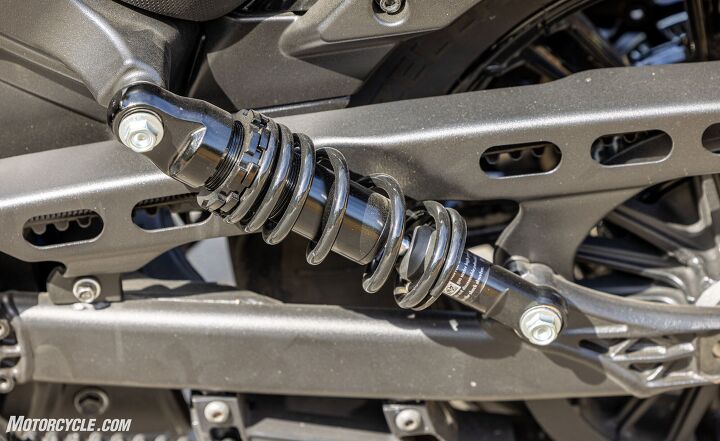
The Rogue’s shocks might as well be modern day torture devices. It would be one of the first things we’d change if we owned one.
Let me tell you, there wasn’t only audible discomfort, there was actual discomfort. While stuck in a conga line of traffic, moving approximately 30 mph, I hit a bump on the Indian that immediately made my back tighten. Ryan and I had been joking all day about every little jolt on the Indian being sent directly up our spines, but it actually came true this time. The bump I hadn’t taken much notice of on any other motorcycle had blown through the measly two inches of travel in those shocks and directed itself straight to my back. It might be the first time I’ve been injured on a motorcycle while riding it normally. At least it was a great excuse for my wife to walk on my back for a minute or two.
Sure you can insert the old man joke here, but the point remains: having so little suspension travel is ridiculous.
What’s It Going To Be?
It sounds like we don’t like either bike, doesn’t it? In stock trim, both leave things to be desired. However, we approached this test from a fairly specific viewpoint: that of the classic American V-Twin cruiser. Keep that in mind, as our performance-biased scorecard will show the Harley as our winner. In reality, the scorecard can’t capture the “it” factor that is lightweight V-Twin cruising, and that’s why, in our minds, the Indian is the real winner here. Ryan captures our collective thoughts nicely:
Even with the Harley-Davidson delivering better performance in nearly every way, our comparison still left Troy and me wondering if that’s what a “lightweight” cruiser customer wants. The Indian Scout Rogue delivers the cruising experience one has come to expect from the category – for better or worse – while the Nightster delivers an entirely new experience of what a lightweight cruiser can be. Is it too different though? Only time will tell.
It’s kind of interesting the way this Showdown panned out after our last Indian v Harley-Davidson brawl, in that it’s kind of the opposite. In that test, I preferred the Road Glide because it delivered more of what I would want from a grand American tourer versus the much sportier and techier Indian Pursuit. Here, the Indian delivers more of a “classic” cruiser experience with the Nightster putting an emphasis on performance and tech. These are interesting times in the H-D/Indian wars.
|
Ryan In Gear
|
|
Trizzle In Gear
|
| Scorecard | 2022 Harley-Davidson Nightster | 2022 Indian Scout Rogue |
|---|---|---|
| Price | 100% | 98.2% |
| Weight | 100% | 87.5% |
| lb/hp | 100% | 89.5% |
| lb/lb-ft | 100% | 87.0% |
| Total Objective Scores | 100% | 91.3% |
| Engine | 85.0% | 90.0% |
| Transmission/Clutch | 80.0% | 75.0% |
| Handling | 81.3% | 70.0% |
| Brakes | 82.5% | 70.0% |
| Suspension | 77.5% | 50.0% |
| Technologies | 85.0% | 70.0% |
| Instruments | 75.0% | 75.0% |
| Ergonomics/Comfort | 70.0% | 60.0% |
| Quality, Fit & Finish | 70.0% | 90.0% |
| Cool Factor | 80.0% | 95.0% |
| Grin Factor | 82.5% | 80.0% |
| Troy’s Subjective Scores | 79.2% | 76.7% |
| Ryan’s Subjective Scores | 79.8% | 75.8% |
| Overall Score | 83.6% | 79.3% |
| Specifications | 2022 Harley-Davidson Nightster | 2022 Indian Scout Rogue |
|---|---|---|
| MSRP (as tested) | $13,899 | $14,149 |
| Engine Type | 975cc liquid-cooled Revolution Max 975T V-Twin, chain-driven, DOHC, hydraulic self-adjusting lifters, intake VVT; four valves per cylinder | 1133cc liquid-cooled DOHC 60-degree V-Twin; 4 valves per cylinder |
| Bore x Stroke | 97 mm x 66 mm | 99mm x 74mm |
| Compression Ratio | 12:01 | 10.7:1 |
| Power | 79.8 hp at 7,200 rpm (measured) | 81.6 hp @ 7600 rpm (measured) |
| Torque | 64.1 lb-ft. at 5,600 rpm (measured) | 63.8 lb-ft @ 5600 rpm (measured) |
| Fuel System | Electronic Sequential Port Fuel Injection (ESPFI) | Closed Loop Fuel Injection, 60 mm throttle body bore |
| Lubrication System | Semi-Dry Sump | Semi-Dry Sump |
| Exhaust | 2-into-1; catalyst in header | Split Dual Exhaust w/Crossover |
| Clutch | Mechanical, 8 plate wet, assist & slip, 1090N | Wet, Multi-Plate |
| Transmission | 6-speed | 6-speed |
| Final Drive | Belt, 80/34 ratio | Belt, 141-tooth |
| Frame | Stressed-member, high strength low alloy steel trellis frame; stamped, cast, and forged junctions; MIG welded; aluminum forged mid-structure | Cast aluminum frame |
| Swingarm | Mild steel, rectangular tube section, stamped x-member; MIG welded | Steel |
| Front Suspension | 41mm Showa Dual Bending Valve conventional forks. Aluminum fork triple clamps. 4.5 inches of travel | 41mm telescopic fork, 4.7 in. travel |
| Rear Suspension | Rear suspension is dual outboard, direct-acting (no linkage) emulsion technology shock absorbers with coil springs and a threaded collar for pre-load adjustment. 3.0 inches of travel | Twin coil-over shocks, adjustable for spring preload, 2.0 in. travel |
| Front Brake | Axially mounted 4-piston caliper, single 320mm disc | 298mm disc, 2-piston slide-type caliper (ABS optional) |
| Rear Brake | Floating single-piston caliper Solid uniform expansion rotor, 260mm disc | 298mm disc, 1-piston slide-type caliper (ABS optional) |
| Front Wheel | 19-inch aluminum cast, satin black, 2.5 inches wide | 16 in. x 3.5 in., cast |
| Rear Wheel | 16-inch aluminum cast, satin black, 4.25 inches wide | 16 in. x 3.5 in., cast |
| Front Tire | D401F 100/90-19 57H Dunlop Harley-Davidson Series Bias Blackwall | 130/60-B19 Metzeler Cruisetec |
| Rear Tire | D401T 150/80B16 77H Dunlop Harley-Davidson Series Bias Blackwall | 150/80R-16 Metzeler Cruisetec |
| Brakes, Anti-Lock Braking System (ABS) | Standard | Optional |
| Rake/Trail | 30° / 5.4 inches | 29° / 4.7 inches |
| Wheelbase | 61.3 in. (1,556 mm) | 62 in. (1575 mm) |
| Seat Height | 27.1 inches | 26.1 inches |
| Length | 86.9 inches | 87.5 inches |
| Overall Width | 32.9 in. (836 mm) | 39.2 inches |
| Overall Height | 43.6 in. (1,108 mm) | 46.5 inches |
| Fuel Capacity | 3.1 gallons | 3.3 gallons |
| Oil Capacity | 4.75 qt. | 3-4 qt. |
| Curb Weight | 482 pounds (measured) | 551 pounds (measured) |
| Fuel Economy | 44.5 mpg (average) | 48.5 mpg (average) |
| Battery | Sealed, maintenance-free, absorbed glass mat (AGM) battery, 12V, 12Ah, 225 CCA at 0°F | 12 volt, 13 amp-hour, 245 CCA (cold cranking amps), Maintenance Free AGM |
| Headlight | All LED headlamp, low and high beam with signature position lighting | Osram HB2 12V 60/55W LL |
| Rear Lights | All LED rear lighting | RY10W |
| Front Signal Lights | LED Bullet Turn Signals | Non-serviceable LED |
| Rear Turn Signals | LED Bullet Turn Signals | Non-serviceable LED |
| Gauges | 4-inch viewable round gauge area analog display with, Speedometer, L/R turn Indication, Traction Control Indication, Coolant Temperature Alert, ABS alert, Fog Lamp Indication, Battery Voltage Alert, High Beam Indicator, Low Fuel Indication, Rear-ABS Disabled Indication, Failure-Indication Alert, Neutral Position Indication, Low Tire Pressure indication, Check Engine Light indication, Oil Pressure Alert, Service Indication. | Analog speedometer with multi-function LED display |
| Colors | Vivid Black, Gunship Gray, Redline Red | Black Metallic, Black Smoke, Sagebrush Smoke, Storm Blue, Stealth Gray |
| Warranty | 24 months (unlimited mileage) | 24 months |
| Service Interval | First 1,000 miles, every 5,000 miles thereafter | First 1,000 miles, every 2,500 miles thereafter; valve inspection every 20,000 miles |
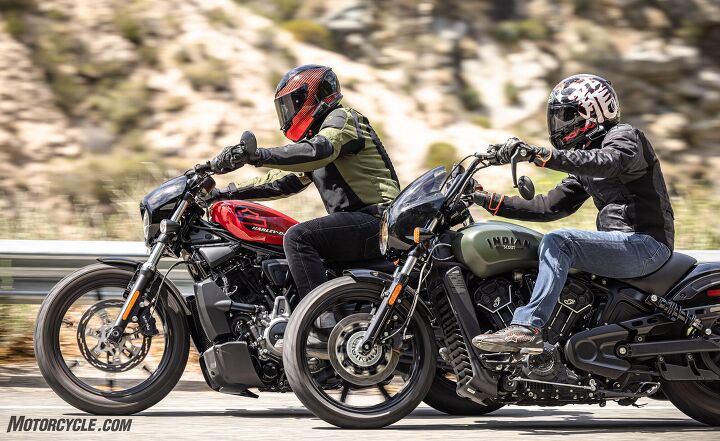
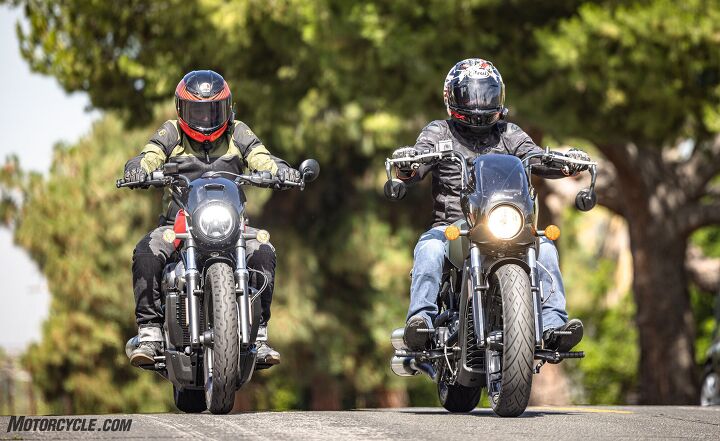

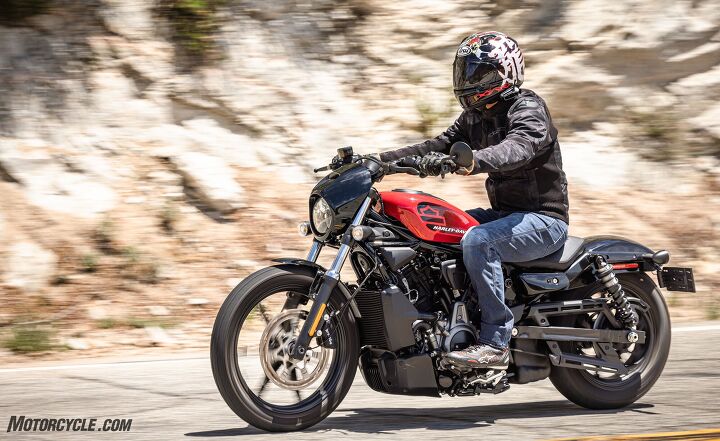
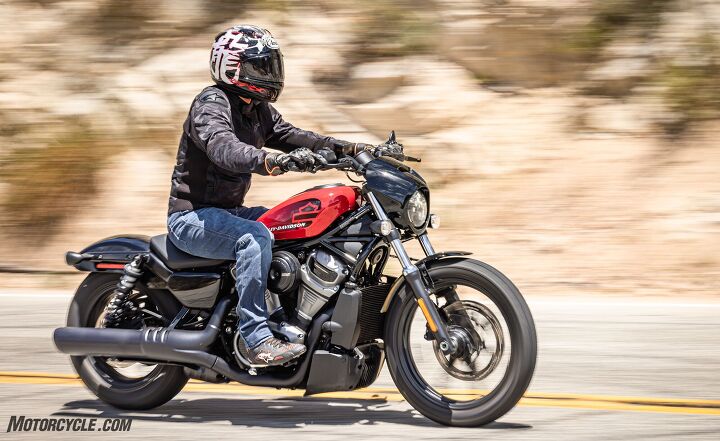
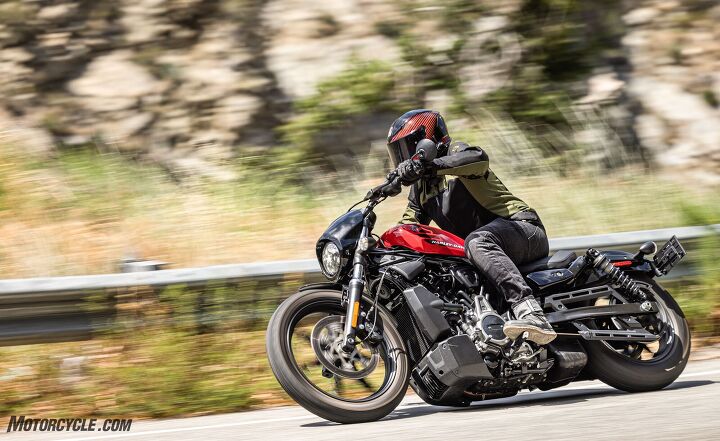
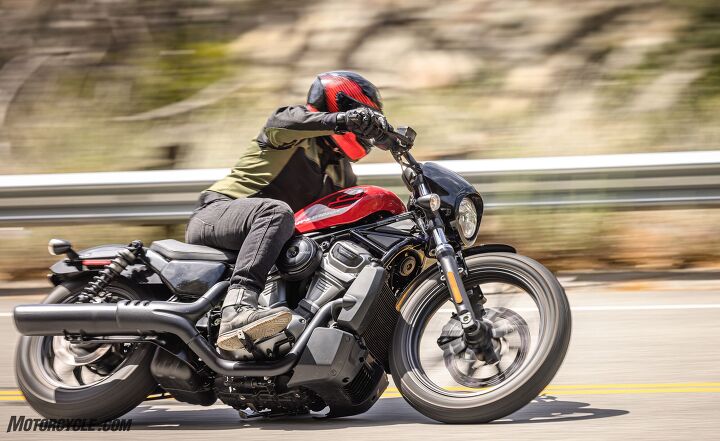
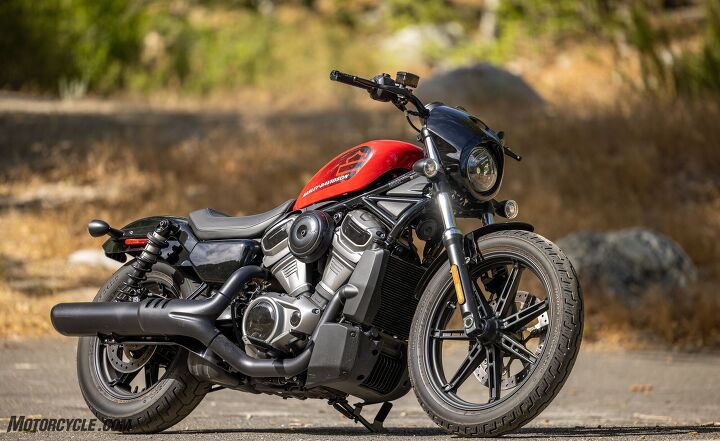
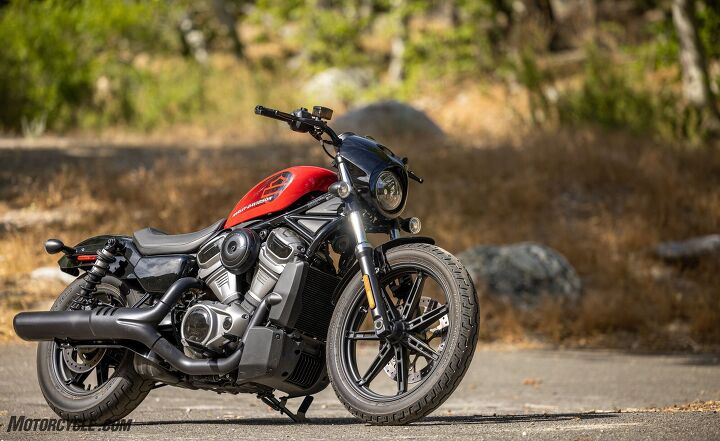
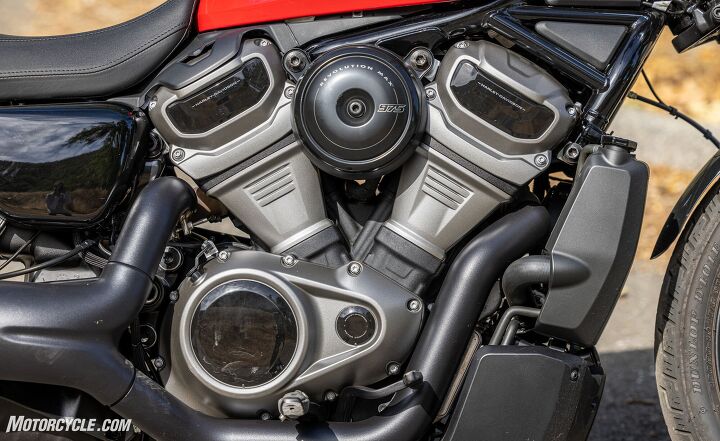
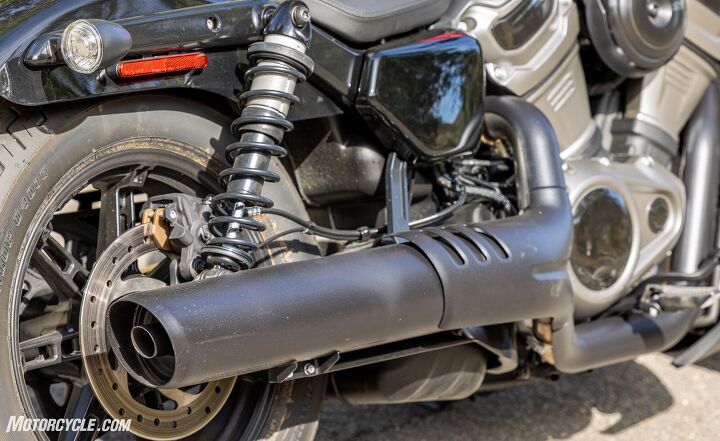
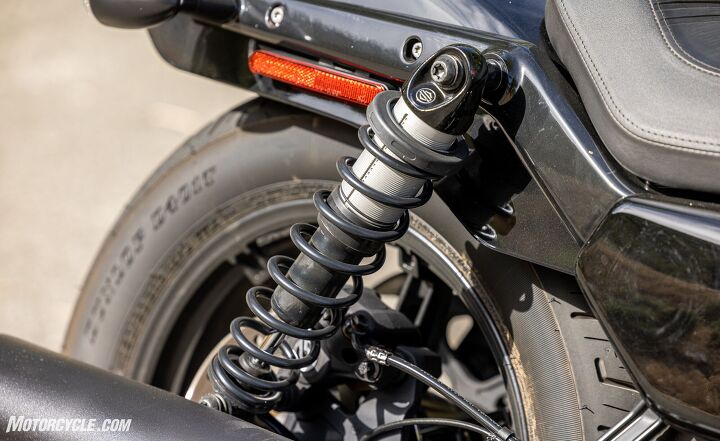
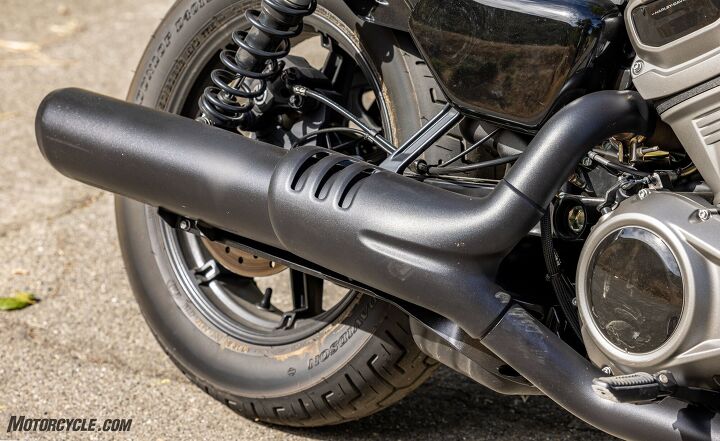
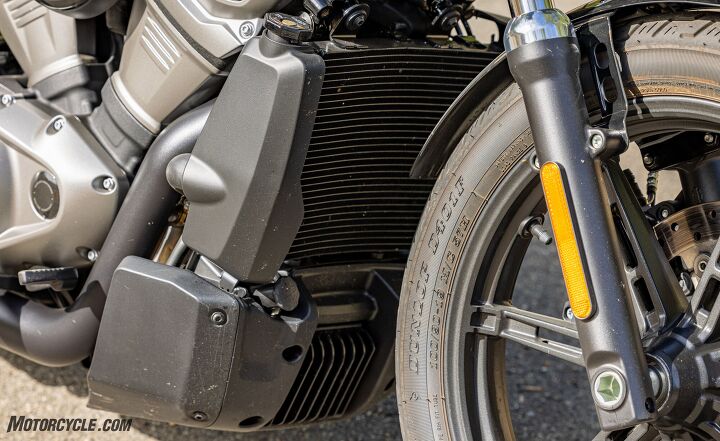
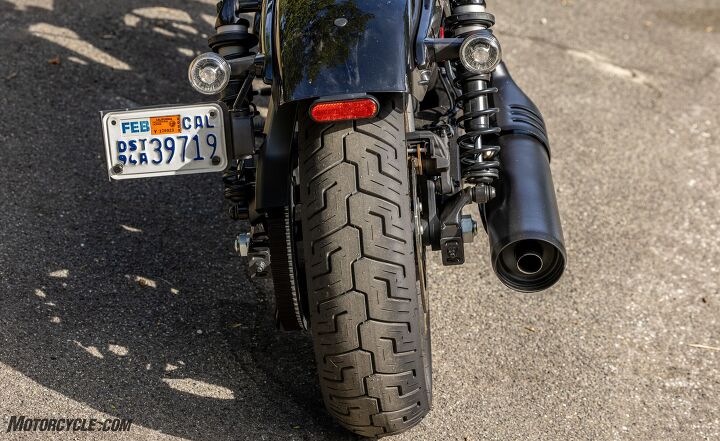
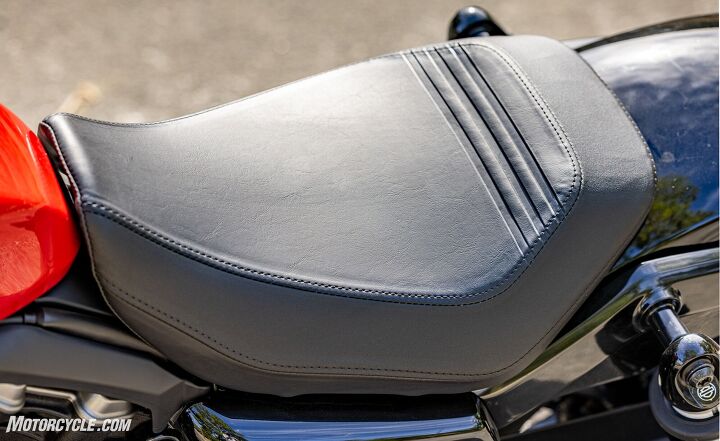
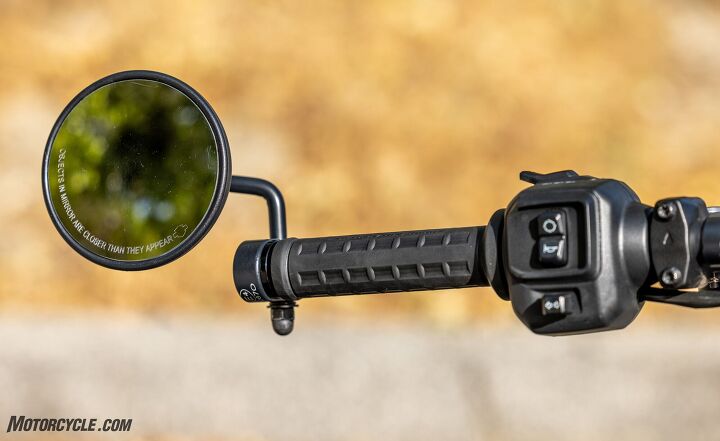
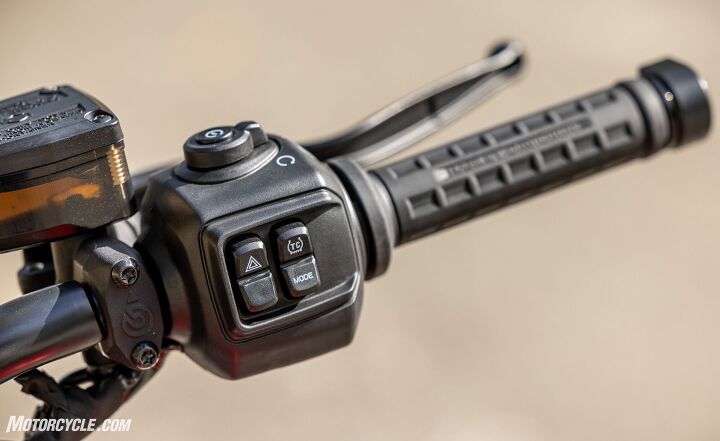
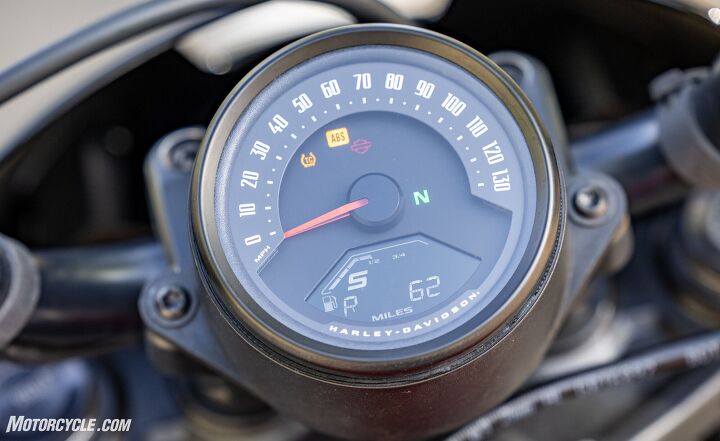
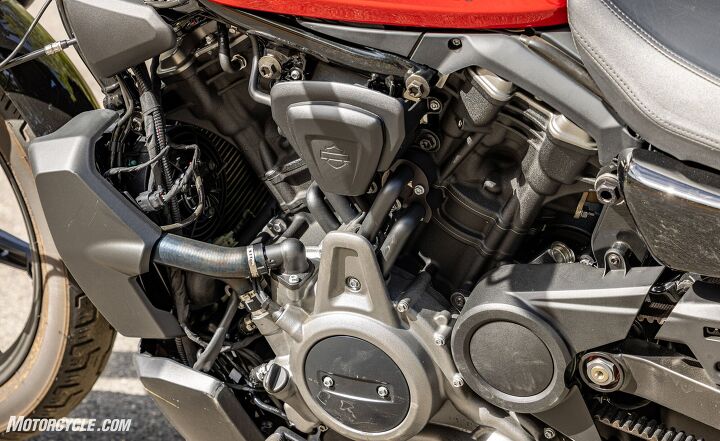
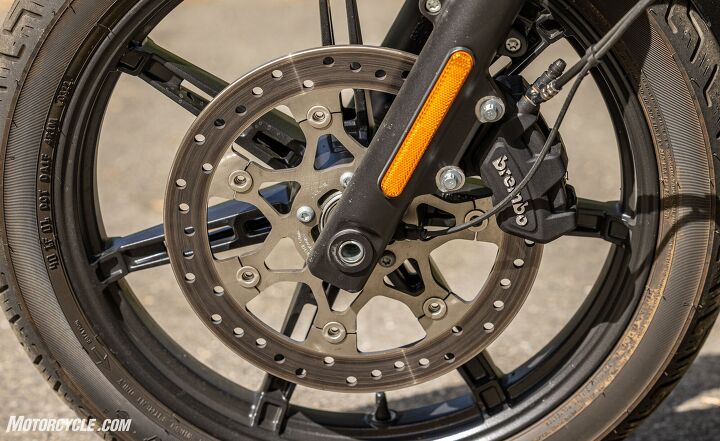
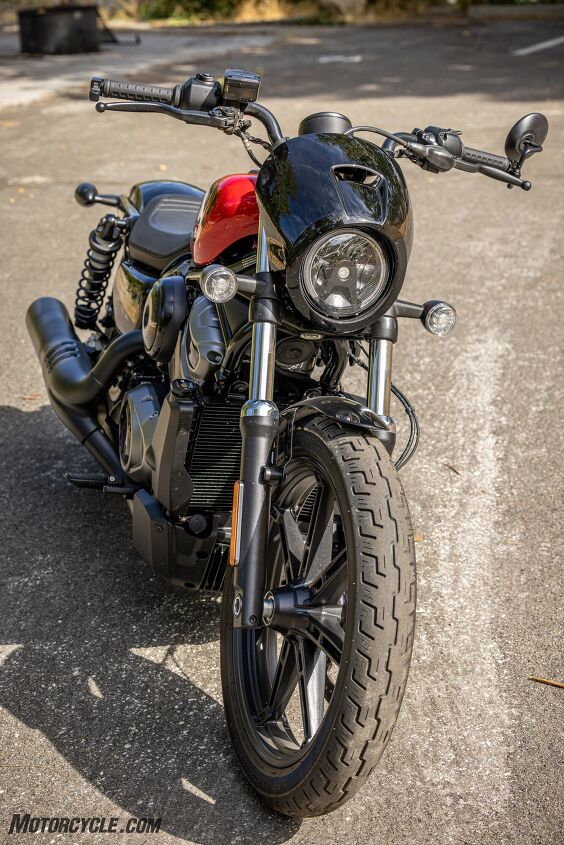
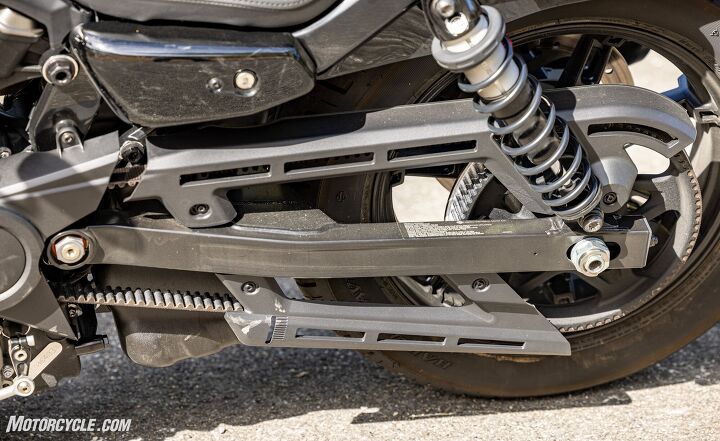
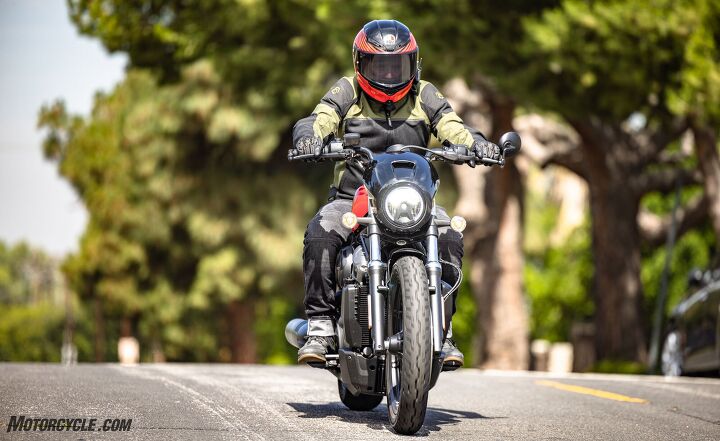
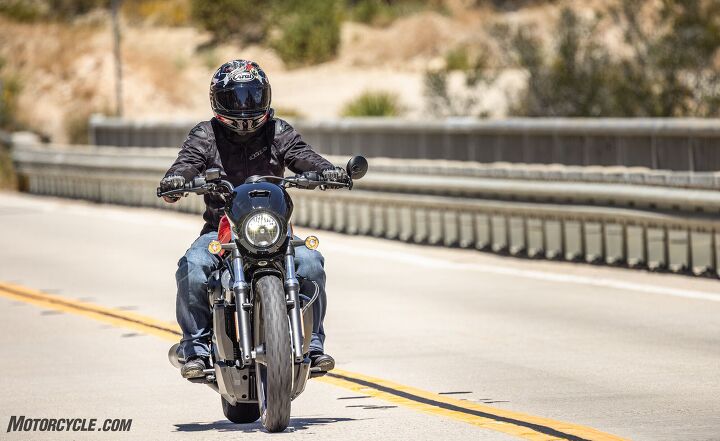
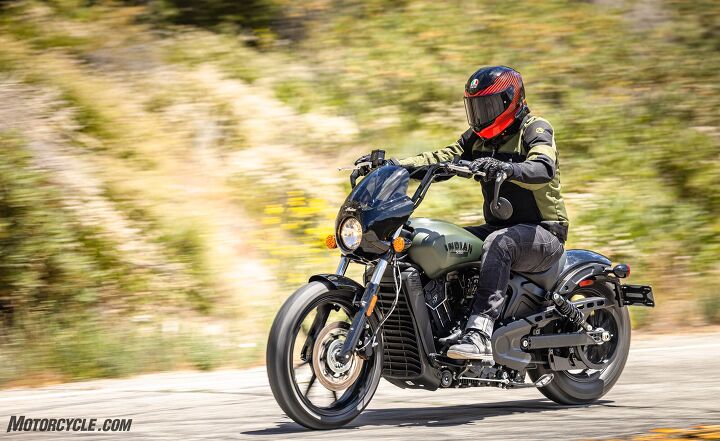
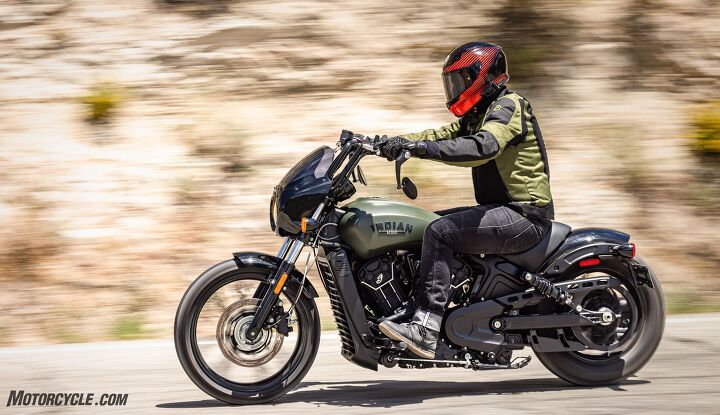
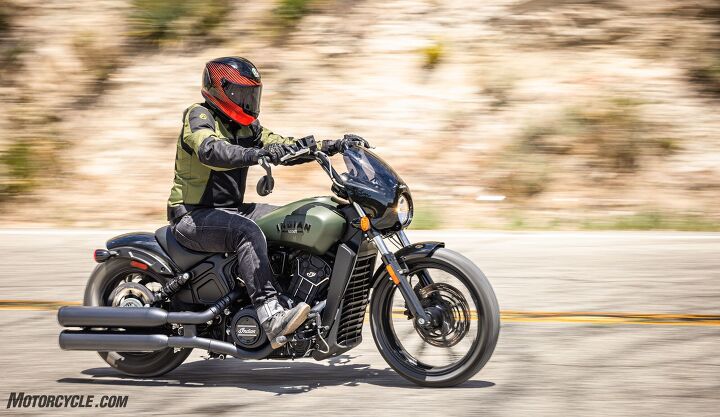
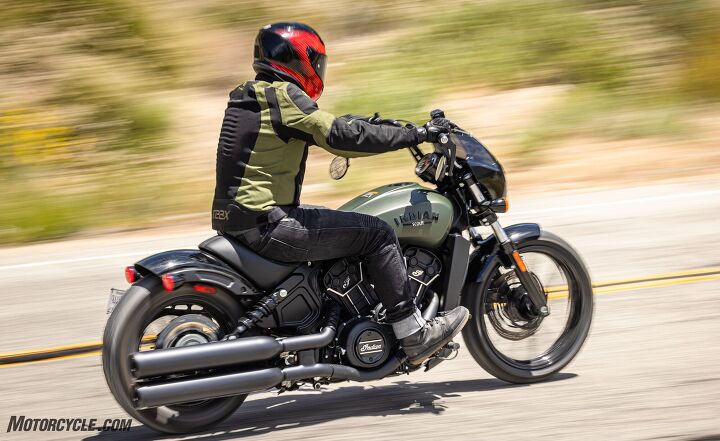
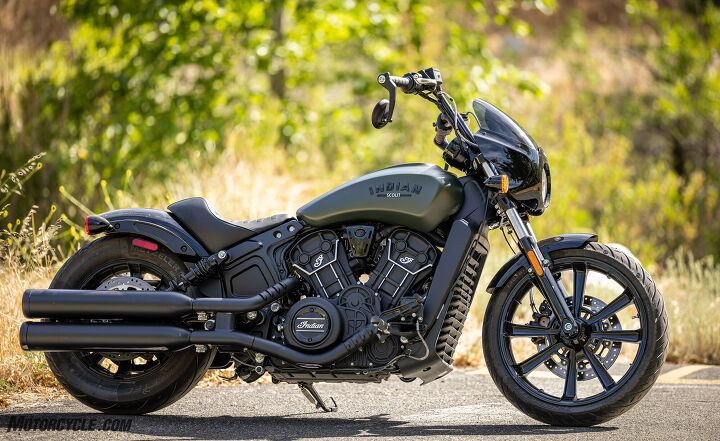
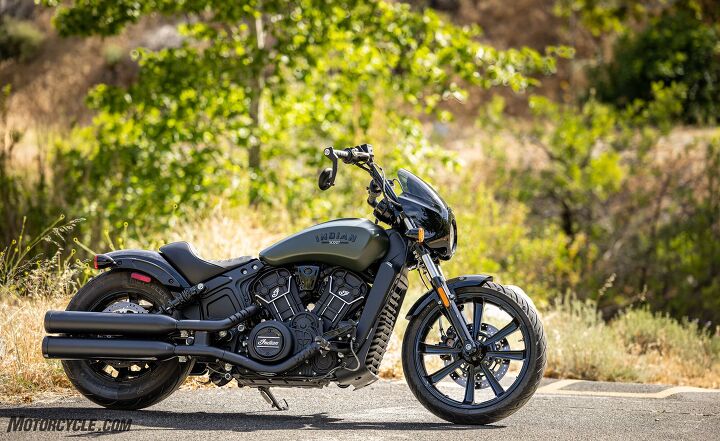
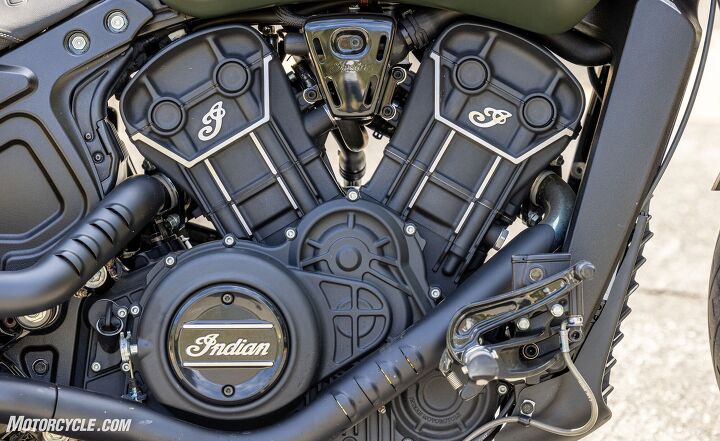
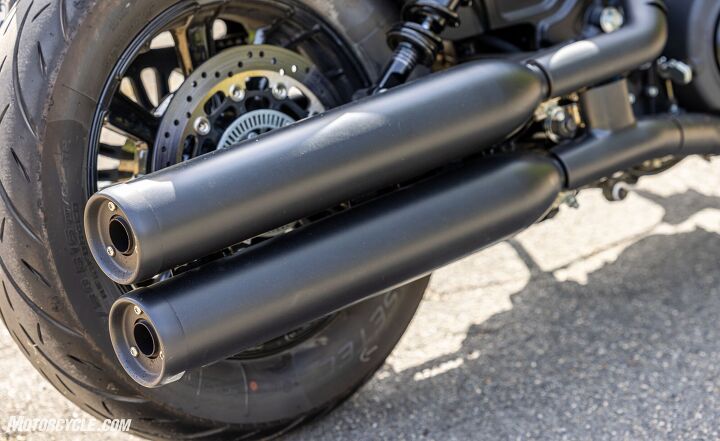
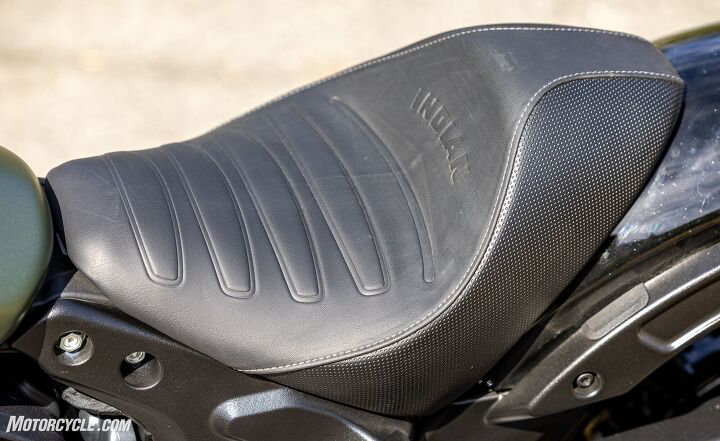
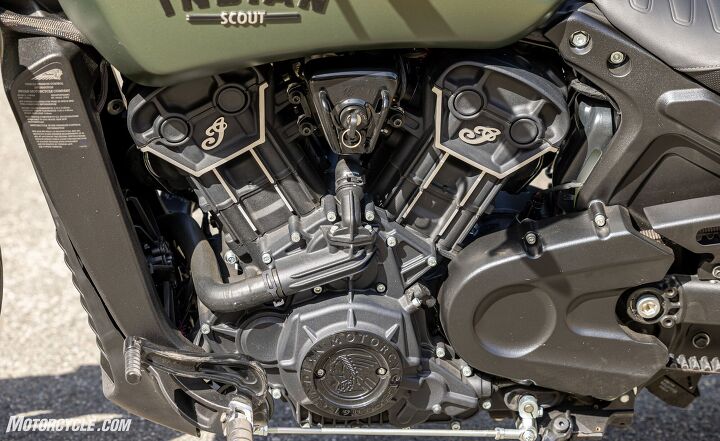
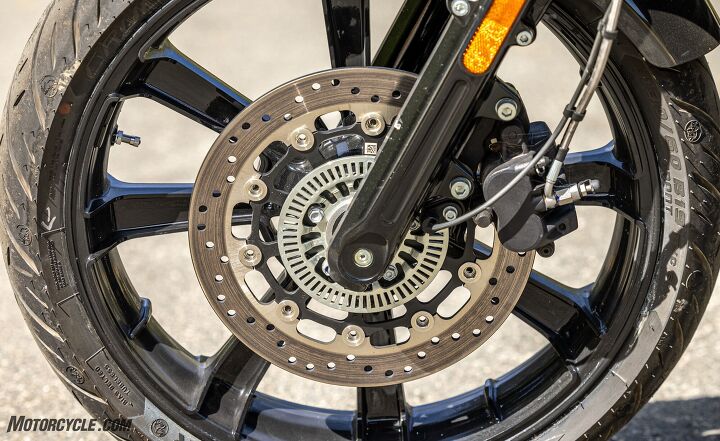
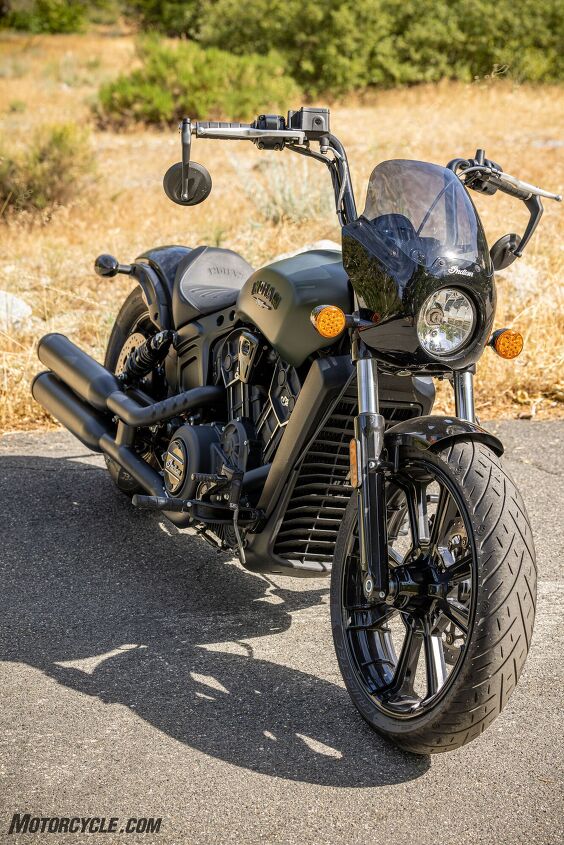
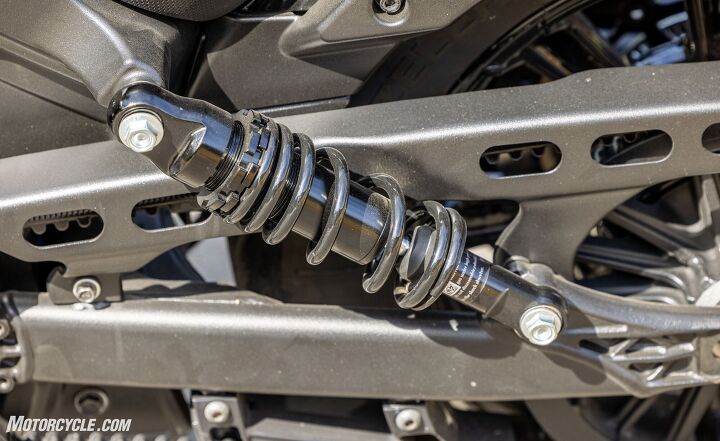
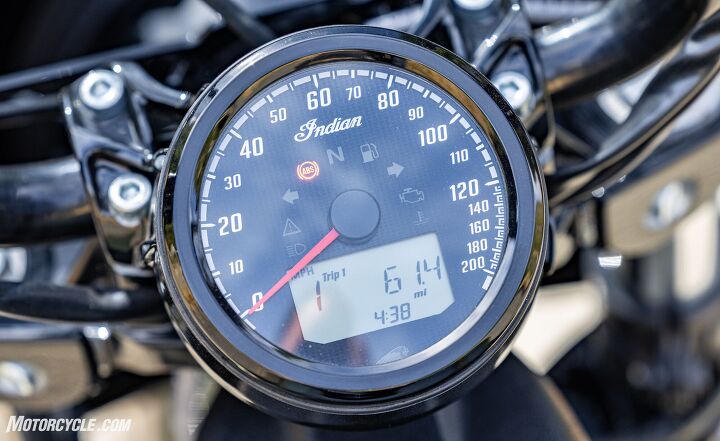
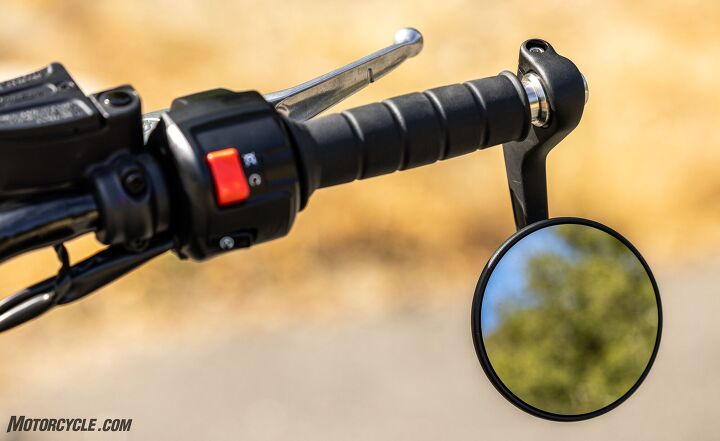
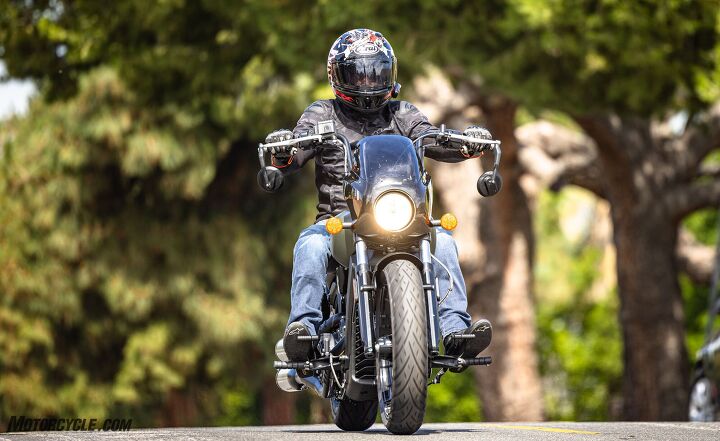
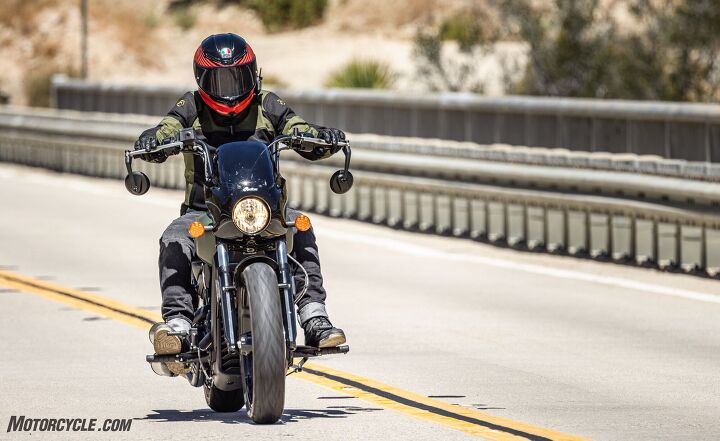
We are committed to finding, researching, and recommending the best products. We earn commissions from purchases you make using the retail links in our product reviews. Learn more about how this works.
Become a Motorcycle.com insider. Get the latest motorcycle news first by subscribing to our newsletter here.
The post Showdown: 2022 Harley-Davidson Nightster vs Indian Scout Rogue appeared first on Motorcycle.com.
Copyright
© Motorcycle.com


